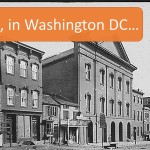Oh, good ‘ol ISDN PRI voice T1‘s. It’s still the most prevalent voice access technology in mid-size and enterprise companies – and it’s also a favorite of IT Professionals, in particular… or not.
One of the wonderful things about ISDN PRI voice is that it actually is a lot less work when it comes to Disaster Recovery (a.k.a. “DR”)… because there aren’t many options! LOL
So which ISDN PRI service provider is the least likely to experience downtime? Well, I can tell you a few recommendations but I am not the best source for that information. Your peers (who have lived with providers day-in, day-out), are the only people you should be asking that question. Click here to see which PRI service provider has the highest customer rating.
What I can tell you, however, are the DR features these providers offer for your ISDN PRI Voice service, just in case you didn’t have time to call and ask a couple hundred providers on your own…
There are three options that I’ve seen IT Departments take advantage of to make sure their inbound calls have as little chance of downtime as possible:
1. DTO
2. Dual Providers
3. Toll Free.
Let me explain each of these, in case you are not familiar.
Digital Trunk Overflow (DTO)
The most common and easiest way to auto-failover an ISDN PRI is through Digital Trunk Overflow (DTO). There are several other names for this as well, including Trunk Group Call Forwarding, Auto-PRI-Failover, etc. but they are all the same service.
So how does DTO work? In advance, you designate one phone number to fail incoming traffic to, in the case your PRI trunk group is either ringing busy or unavailable. The most common destination for the failover traffic is analog POTS lines, configured in a hunt group and plugged into the phone system strictly for back-up. Analog POTS lines do not need electricity so they will even work in the case of a black-out (while your phone system is hopefully powered by a UPS device). Best practices tends to be four POTS lines per ISDN PRI.
Upsides:
• It’s a tried and true way of DR for your ISDN PRI T1 and it works great.
• It is inexpensive, considering the DTO feature only costs around $20/month.
• You can use it on normal, local phone numbers (i.e., DID’s).
Downsides:
• Your incoming call capacity drops from 23 simultaneous calls per ISDN PRI to only 4 (assuming you only have 4 POTS lines per PRI), so you usually have to run around and tell everyone to use their cell phone for outbound calls.
• Not all providers offer this service.
• Per public utility routing rules, the failover number typically has to be a phone number within your major metropolitan area.
• You lose your DID routing, since all DID’s will fail to a single phone number.
Multiple Providers
A more creative way our company has helped our clients configure DR for their ISDN PRI T1’s is using multiple providers. Disclosure: This only applies if a company has multiple ISDN PRI T1 circuits or is very close to needing a second circuit.
How it works: You purchase ISDN PRI T1’s from two different telecom service providers, each of which can do DTO (detailed above). Provider A handles the incoming calls and auto fails to Provider B. Provider B’s DTO is programmed to fail to analog POTS lines. So in other words, incoming calls go to Provider A, then to Provider B, then POTS lines. Conversely, you program your phone system to grab outgoing lines from Provider B, then Provider A, then POTS lines.
Here is a graphic illustration:
Upsides:
• You have a greater chance of not losing service, since it is rare that both providers will have a simultaneous outage.
• You have more simultaneous calls available if one provider has an outage because you are better utilizing the same number of ISDN PRI circuits you would have had, regardless, with the same service provider.
Downsides:
• It can potentially be complicated to split up your inbound and outbound voice traffic between two separate providers and not accidentally miscalculate and end up over-saturating one of trunk groups.
• It is more complicated to troubleshoot if you have an outage. You have to think about which type of calls are having an issue (i.e. inbound, outbound, toll free, etc.), and remember which provider is handling that type of traffic.
• You may slightly lose some negotiating power by splitting your total ISDN PRI telecom spend between two different service providers.
Toll Free
Lastly, you can use advanced toll free features to give you Disaster Recovery for your ISDN PRI voice service.
How it works: First, you must use a toll free number for your main telephone number for the business. These features will not work on a regular local phone number. Second, you need to call your provider and ask them for a feature called call forward busy or call failover. From there, it works the same as all of the other methods mentioned above. You give them a single phone number to forward calls to in case your primary number is ringing busy, for any reason.
Upsides:
• It’s an inexpensive feature (Free or approx. $10/month)
• You can use a secondary phone number anywhere in the US (i.e. another geographically diverse location).
Downsides:
• You must use a toll free number, which means you’re paying a per minute charge for every incoming call. This is expensive if the only reason why you’re using a toll free number is for DR.
• You can only forward calls that are coming into your toll free number. If you have calls coming into an additional direct local number (DID), those will not get redirected.
So those are the three main disaster recovery features for an ISDN PRI Voice service. Which one is the best? They all work well, so it more depends on which upsides & downsides best match your company’s needs.
About the Author
Mike Smith is the Founder and President of AeroCom and has been helping companies with telecom and cloud services since 1999. He has been the recipient of numerous business telecommunications industry awards and in 2011, he was honored as one of the top 40 business people in Orange County, CA., under 40 years old. Follow Mike on LinkedIn, Twitter or SpiceWorks.






![Which Phone Technology is Best for Our Company? [Infographic]](https://www.aerocominc.com/info/wp-content/uploads/2016/07/voice1-150x150.jpg)
